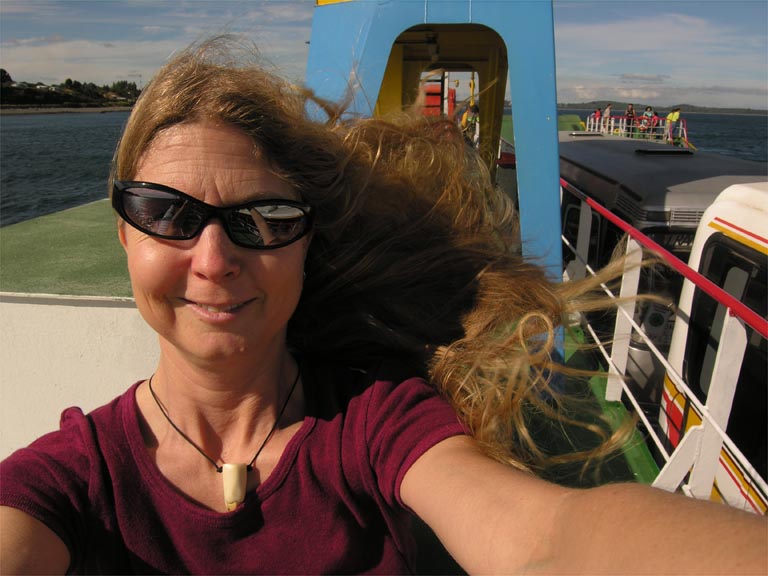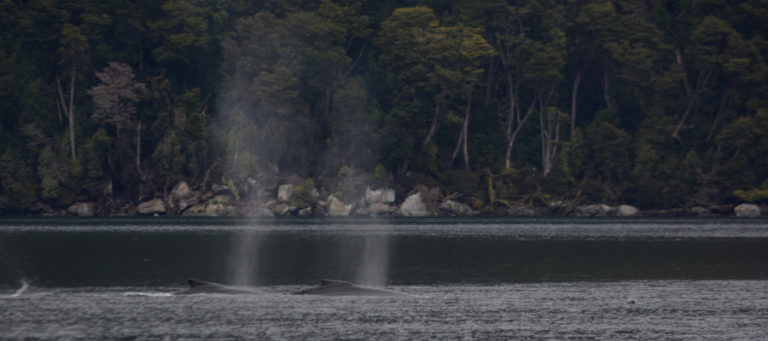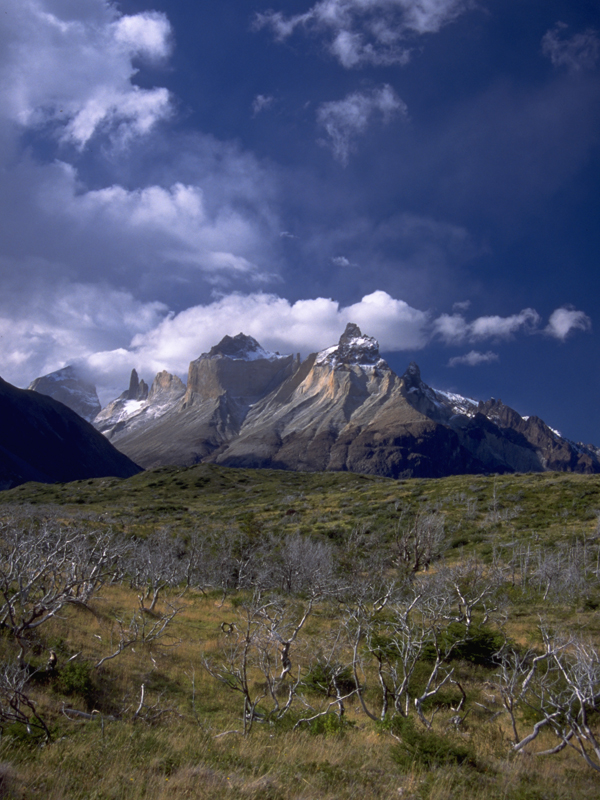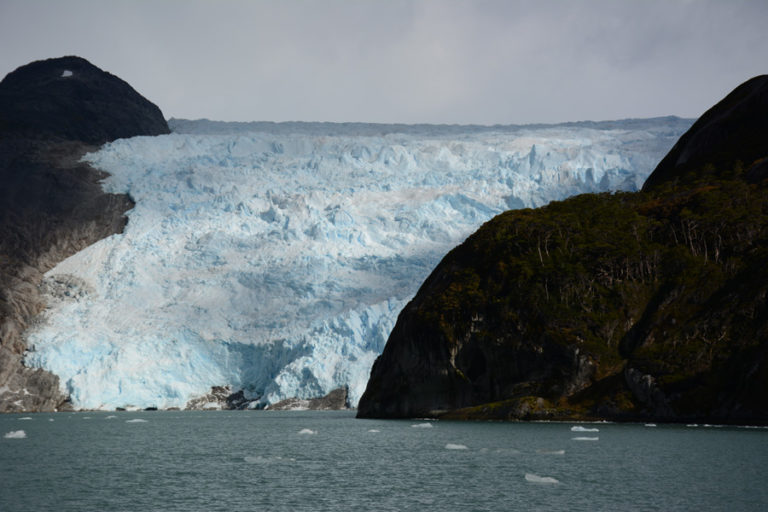We recently caught up with Jacqueline Windh who will be joining us onboard RCGS Resolute in 2019 on our Chilean Fjords Adventure voyage. Jacqueline is a scientist and a communicator: writer, photographer, and public speaker and spent a number of years living and working in South America.
OOE: What first sparked your interest in nature and the outdoors?
I’ve been a “nature child” as long as I can remember. I think that it was something I was born with – a sensitivity to plants and animals and how they all work together. But our family’s summer cottage definitely allowed me to develop that interest and knowledge.
I grew up in Mississauga, Ontario, on the outskirts of Toronto. We had a cottage on a lake in Muskoka, and it was accessible only by boat. My dad was an airline pilot with an irregular work schedule – so, unlike many other families who would only get up to their cottages on weekends, we would be up there for weeks at a time. There wasn’t much to “do” there (at least by today’s standards of keeping kids amused!) but I was completely happy just roaming the forest barefoot – learning to identify birds, looking under rocks for snakes or lizards, sneaking up on racoons. I did this alone, right from when I was very small, maybe six or so – and it really taught me to listen and to observe.

OOE: You have a varied resume, from working as a geological consultant in the mining industry to kayak guide to photographer and author. What led you down this path?
Haha, yes, I have definitely followed a very diverse career path. But the more I think about it, the more influential those childhood summers in the woods up at the cottage were.
I was always interested in the sciences, and especially in Geology. I remember my mom taking me to the Royal Ontario Museum when I was in first grade, and being amazed by the mineral collection there. Up until then, I had always thought rocks were just grey things on the ground that you walk on. Suddenly I wanted to learn more about them.
So, by the end of high school, when I had to pick a career path, a job hiking around the woods and looking at rocks seemed to be a perfect fit. So I ended up studying Geology. I did my undergrad at McGill, in Montréal, and then my PhD at the University of Western Australia. Unfortunately, what I hadn’t quite been aware of as a teenager when I made this career plan was that the goal of minerals exploration was to develop mines and destroy those wilderness areas – so that’s the short reason of why I got out of Geology.
Also – again, stemming back from my childhood at the lake – I have always loved kayaking and canoeing. As I was transitioning out of the mining industry, I had the opportunity to do my kayak guide training, and ended up guiding ocean kayak tours off the west coast of Vancouver Island for five summers. And of course, through all of this – the international travel as a geological consultant, and then paddling through the wilds of Clayoquot Sound – I was taking pictures and gradually developing my photography skills. I found that it was easier to market my photos if I was also writing articles or books, so I ended up doing an MFA in Creative Writing at UBC to help that along too! I think that, with the photography and writing, I have finally found the career that suits my lifestyle and values, and that I will stick with!

OOE: You have spent quite a lot of time in South America, in particular, Chile. What are some of your favourite things about this country?
Oh, as they say, Chile is a long thin country! It is so varied and diverse, which is one of the many things I love about it.
Imagine if, here in the northern hemisphere, you defined all of the shoreline from the tip of Baja California, Mexico, to Alaska as a single country – well that is basically what Chile is. It ranges from the driest desert in the world (the Atacama Desert, up at the borders with Peru and Bolivia), to lovely mountain and forest and agricultural country in the centre, to the wild and windy south.
And that is my favourite part of Chile: southern Patagonia. The landscape is so much like where I live in coastal British Columbia. It is roughly the same latitude south as we are north, with an Inside Passage and lots of channels and fiords and islands and glaciers. But everything is so much more extreme there: the winds and the currents and the weather. We have our tall and stately cedars and spruces – but in southern Patagonia, the tree-line is down at just 500 m or so, and the forest is just a slanted tangle of trees, sculpted by the wind.

OOE: What environmental work are you currently involved with?
I’ve worked as a board member or fundraiser for a few environmental organizations. Currently, I am on the Board of Directors for the Association of Wetland Stewards for Clayoquot & Barkley Sounds.
Wetlands Stewards is an NGO dedicated to helping amphibians: frogs and toads and salamanders. These little guys are threatened in so many areas of the world, in part, due to habitat loss. Amphibians have moist skins, so they are also very susceptible to environmental contaminants, and to fungi and other infections.
Our Wetland Stewards project helps them out in many ways: first, through documenting the populations and figuring out where they are breeding, and then delineating what are crucial habitats that require protection from development. We also work on educating the public: even seemingly nature-friendly activities like catching tadpoles can actually harm threatened populations. And we have been instrumental in having culverts built under the highway, so migrating frogs and salamanders don’t get run over on their way to and from breeding areas.
OOE: Do you have a favourite photograph from your travels in Chile? Can you tell us about why this image stands out to you?
I have way too many favourite images from Patagonia! But this particular one stands out for me in many ways: it is what we call el árbol or “the” tree from San Isidro Lighthouse, on Magellan Strait. Our upcoming Chilean fjords cruise will pass this very spot.

Why this one image? First of all, it is iconic Patagonia: a lone coigue tree on the shoreline, sculpted by the relentless Patagonian wind. Second, this place has a personal meaning to me as well. My very good friends, the Cáceres Murrie family, have a long-term lease on the lands here, and they are building a hostería beside the lighthouse. It’s beautiful and it’s remote. There is no road – you must hike in to get here. I have seen humpback whales and dolphins and albatross from this spot – not to mention the world’s southernmost species of hummingbird. And I have such great memories from this place – I’ve spent many good times with these great friends here over the years.
OOE: You’re good friends with RCGS Explorer-in-Residence Jill Heinerth, who is joining us in Antarctica this Christmas. How did you two meet and do you have any adventures planned together?
Jill and I are each other’s oldest friend! I won’t say how old… but it is substantial: we met when we were three! We grew up two doors down from one another, and we have been partners in numerous adventures over the years.
Although we didn’t see much of one another in our thirties, we have always stayed in touch – and it is interesting how we both have lived quite parallel lives of adventure. We were talking about that lately, and we honestly are not sure how much of that is because we influenced one another, or how much we each just would have been doing these things anyway.
In the last decade or so we have had a lot of chances to partner up again. I helped out on some of Jill’s documentary filming in the Florida Everglades, and she had me along as a scientific advisor on a National Geographic expedition to Egypt. This past year we got out on a grizzly bear photo shoot together, and we are planning to go kayaking (me) and diving (Jill) with sea lions off Vancouver Island’s northeast coast this coming February.
OOE: What are you most looking forward to about the Chilean Fjords Adventure voyage commencing March 31st?
Oh, that’s so hard to say – the whole trip is going to be amazing. But I think what I am looking forward to most is the glacier visits.

There are not many places in the world where you can get up close to a glacier, but we should be able to approach them in the Zodiacs (weather permitting – always an issue in Patagonia!) and hopefully be able to land and walk around alongside several of them. Glaciers seem so serene and peaceful when viewed from a distance, or in photos. But close up, they are powerful and active – and even kind of scary.
The Yagán people (whose traditional territory is all of the Beagle Channel and the waters down to Cape Horn) had many tales and warnings about the glaciers. For example, you were not supposed to look at the glaciers directly, because the spirits of past people are inside (that’s why you can hear them talking and moving around). If you look at them, the ice might burst or explode and water may come gushing out.
I’m looking forward to approaching the glaciers – not just seeing them, but hearing them and feeling their power. It’s going to be an amazing voyage.
If you would like to join Jacqueline on the upcoming Chilean Fjords Adventure, please contact your preferred agent or speak to our sales team here.
For more information on the Chilean Fjords Adventure click here.















